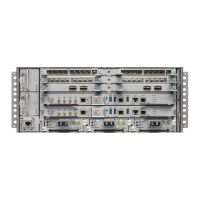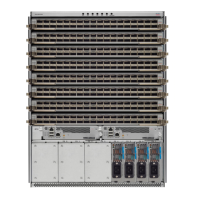network resources. This summarization is known as interarea route summarization. It applies to routes from
within the autonomous system. It does not apply to external routes injected into OSPF by way of redistribution.
This task configures OSPF to summarize subnetworks into one LSA, by specifying that all subnetworks that
fall into a range are advertised together. This task is performed on an ABR only.
SUMMARY STEPS
1. configure
2. Do one of the following:
• router ospf process-name
• router ospfv3 process-name
3. router-id { router-id }
4. area area-id
5. Do one of the following:
• range ip-address mask [ advertise | not-advertise ]
• range ipv6-prefix / prefix-length [ advertise | not-advertise ]
6. interface type interface-path-id
7. commit
DETAILED STEPS
PurposeCommand or Action
configure
Step 1
Enables OSPF routing for the specified routing process and
places the router in router configuration mode.
Do one of the following:
Step 2
• router ospf process-name
or
• router ospfv3 process-name
Enables OSPFv3 routing for the specified routing process
and places the router in router ospfv3 configuration mode.
Example:
RP/0/RP0/CPU0:router(config)# router ospf 1
The process-name argument is any
alphanumeric string no longer than 40 characters.
Note
or
RP/0/RP0/CPU0:router(config)# router ospfv3 1
Configures a router ID for the OSPF process.
router-id { router-id }
Step 3
Example:
We recommend using a stable IPv4 address as
the router ID.
Note
RP/0/RP0/CPU0:router(config-ospf)# router-id
192.168.4.3
Enters area configuration mode and configures a
nonbackbone area for the OSPF process.
area area-id
Example:
Step 4
• The area-id argument can be entered in
dotted-decimal or IPv4 address notation, such as area
RP/0/RP0/CPU0:router(config-ospf)# area
1000 or area 0.0.3.232. However, you must choose
Routing Configuration Guide for Cisco NCS 6000 Series Routers, IOS XR Release 6.4.x
296
Implementing OSPF
Summarizing Subnetwork LSAs on an OSPF ABR

